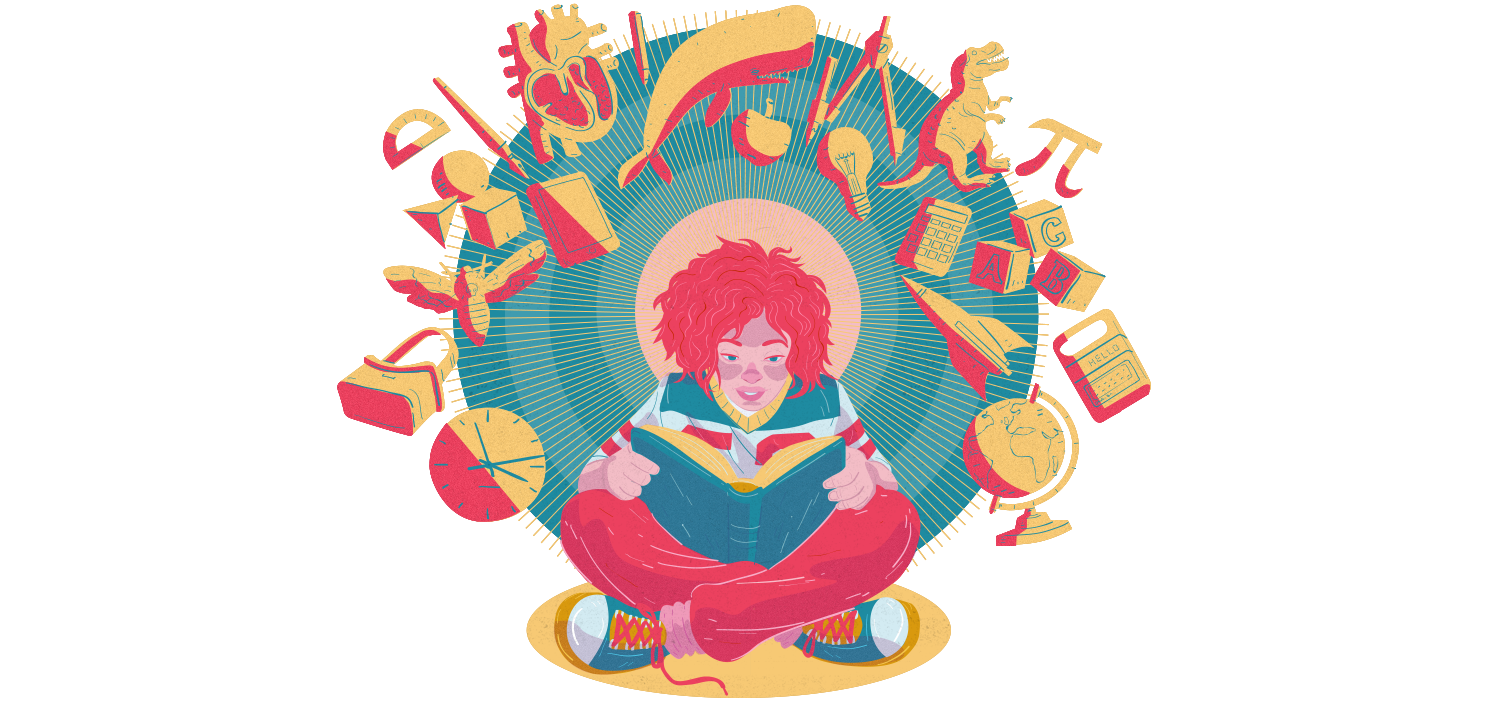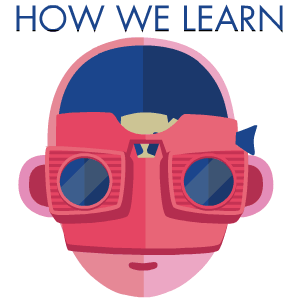

“Not long ago, I read a splendid article on barnacles,” said a white-haired 78-year-old to a room of suited men and women.
It was November of 1990 and John W. Gardner had been called in to reinvigorate a staid workforce at a branch of McKinsey & Company in Phoenix, AZ. He was to deliver a talk he would give again and again to employees and university students alike; its topic was self-renewal.
“This article had an unforgettable opening paragraph,” he said. “The barnacle “¦ is confronted with an existential decision about where it’s going to live. Once it decides “¦ it spends the rest of its life with its head cemented to a rock. For a good many of us, it comes to that.”
Gardner, in contrast, had reinvented himself a number of times–first as a record-setting college swimmer, then as a professor at an all-women’s college, a WWII U.S. Marine, and eventually as Secretary of Health, Education, and Welfare under President Lyndon Johnson. He knew boredom to be the primary parasite of large-scale organizations like McKinsey. From his work as the chief engineer of the Great Society program that oversaw, for one, dramatic expansions to the federal role in American education, he also knew complacent habits and a fixed worldview to be the chief killer of the individual renewal that catalyzed the renewal of society at large.
“There’s a myth that learning is for young people,” he told the room. As if when we pass a certain age we’re stuck in one blind place like the barnacle. Gardner had taken on a new job after his 77th birthday, he shared, and he was still learning. Learn all your life was his point.
Today, even more than ever, school doesn’t have a monopoly on education. The way we can acquire knowledge is changing at fast pace with new innovations, technology, and AI. We’ve explored this further in our How We Learn section, and below you’ll find a broad reading & watch list covering the subject as it’s evolved toward today.
“If I may offer you a simple maxim, “‘Be interested.’ Everyone wants to be interesting, but the vitalizing thing is to be interested.”

Start Here
The latest in the schooling revolution champions problem-solving over rote learning. If anyone is the movement’s pioneer, it’s Ken Robinson. In 2006, in the most-viewed TED Talk of all time, Robinson made a moving case in “Do Schools Kill Creativity?“ for an education system that nurtures creative thinkers and recognizes many kinds of intelligence–instead of just producing good workers.
The 20-minute talk has been watched over 42 million times on the TED website alone. If you have time for only one learning-related recommendation from our list, make it this.
Then, if you’re inspired by what Robinson has to say, you can read his 2009 best seller The Element: How Finding Your Passion Changes Everything. As Maria Popova writes in her review on BrainPickings, it is “a passionate celebration for the wide spectrum of human ability and creativity, which current educational models consistently limit.”

Then Try
Now that the subject has piqued your interest, we’ve got some staff picks to keep you rolling along. Take a look.
- When asked to recommend “the thing” that best represents the topic, Kristen Taylor says, “Oh, OK, easy. Kio Stark’s book Don’t Go Back to School because, like Kio, I too dropped out of a Ph.D. program to find ways to use words and teach beyond the classroom.” [214-page read]
- From his perspective, Duncan Geere thinks everyone should check out The California Sunday Magazine story “Homeward,” about “an Amazonian tribe that sent a 10-year-old boy to Seattle to live with a 22-year-old college student, learn about the changing world, get a degree, and save their village.” [29-minute read]
- Ian Steadman offers Thinking, Fast and Slow. “It’s one of those rare cases of high academic writing becoming a bestseller, but with good reason,” he says. “Daniel Kahnemann’s book, which discusses the two main types of thought and the cognitive biases that each fall foul to, will make you a better thinker. Or, if you want to be cynical, just make you feel smarter.”
- Our creative director, Darren Garrett, cites these beautiful education images from Fritz Kahn. [1-minute browse].
- Finally, I nominate this episode–”Carlos Doesn’t Remember“–from Malcolm Gladwell’s Revisionist History podcast. In a look at the subject of capitalization in the United States, it follows the country’s failure to reach some of the most gifted but poorest kids well before they reach college-age. By the time Harvard tries to offer them full rides, the education system has already lost them entirely. Listening to this both broke my heart and made me rethink my ideas about privilege and intelligence. [34-minute listen]

Dive Deeper
With the time now, or access to your read-it-later client of choice in the future, here are some more of the most compelling reads about the state of education and learning today.
- Why Students Can’t Google Their Way to the Truth
Sam Wineburg and Sarah McGrew, Education Week [5-minute read] - How Education Will Be Smarter, Less Intrusive, and Able to Respond to How You Feel
Amar Kumar, TechCrunch [5-minute read] - Is China’s Gaokao the World’s Toughest School Exam?
Alex Ash, The Guardian [23-minute read] - Why We Desperately Need to Bring Back Vocational Training in Schools
Nicholas Wyman, Forbes [4-minute read] - We Don’t Need No Education
Ben Hewitt, Outside [22-minute read] - 18 in the Bay: What’s It Really Like to be 18 in America Right Now?
Matter [multi-story-read] - Surviving High School
Tom Junod, Atlanta Magazine [45-minute read] - End Them, Don’t Mend Them
P.J. O’Rourke, The Weekly Standard [12-minute read] - Understanding Brown v. Board of Education
James E. Ryan, The Huffington Post [4-minute read] - Shut Up About Harvard
Ben Casselman, FiveThirtyEight [6-minute read] - In the Basement of the Ivory Tower
Professor X, The Atlantic [14-minute read] - Universities Can’t Fulfill the Myth, But They Can’t Become Vocational Schools Either
Chris Lee, Ars Technica [10-minute read] - How the Education Gap Is Tearing Politics Apart
David Runciman, The Guardian [22-minute read] - Millions Learning: Scaling Up Quality Education in Developing Countries
Jenny Perlman Robinson, Rebecca Winthrop, and Eileen McGivney, Brookings [1 hour, 30-minute read] - How Could–and Should–Schooling Look in 2030?
Michael Barber, Bright [5-minute read] - Intelligence Unleashed: An Argument for AI in Education
Rose Luckin, Wayne Holmes, Mark Griffiths, and Laurie Forcier, Pearson [1 hour, 15-minute read] - The Relevance of Algorithms
Tarleton Gillespie, Media Technologies [50-minute read] - What We’ll Teach at the First School on Mars
Nathan Martin, How We Get To Next [8-minute read] - How to Raise a Genius: Lessons From a 45-Year Study of Super-Smart Children
Tom Clynes, Nature [16-minute read] - Why Are Babies So Dumb If Humans Are So Smart?
Maria Konnikova, The New Yorker [6-minute read] - Electrified
Elif Batuman, The New Yorker [30-minute read] - The Love of Learning
David McCullough, 2008 Boston College Commencement Address [9-minute read]

Books
A list of on everything from equity of access to education, to homeschooling, to mastering life as an autodidact.
- Salman Khan–The One World School House: Education Reimagined
- Ken Robinson and Lou Aronica–Creative Schools–The Grassroots Revolution That’s Transforming Education
- Malala Yousafzai–I am Malala: The Girl Who Stood Up for Education and Was Shot by the Taliban
- Mitchell L. Stevens–Kingdom of Children: Culture and Controversy in the Homeschooling Movement
- Clark Kerr–The Uses of the University
- Alison Gopnik–The Philosophical Baby: What Children’s Minds Tell Us About Truth, Love & the Meaning of Life
- Douglas Thomas and John Seely Brown–A New Culture of Learning: Cultivating the Imagination for a World of Constant Change
- Peter Brown, Henry Roediger III, and Mark McDaniel–Make It Stick: The Science of Successful Learning
- Howard Gardner–Frames of Mind: The Theory of Multiple Intelligences
- Josh Waitzkin–The Art of Learning: An Inner Journey to Optimal Performance
- Robert Greene–Mastery

Watch
Finally, if you prefer to watch a good documentary or video, here are a few options.
- American Promise
The result of hundreds of hours of footage, American Promise has been called “a WHALE of a film about race, education, and parenting.” In the vein of Hollywood’s Boyhood, husband-and-wife amateurs Joe Brewster and Michèle Stephenson film their son, Idris, and his best friend, Seun, over the course of 13 years as the two navigate a highly competitive, mostly white private academy in New York City. [2 hour, 22-minute watch]
- Girl Rising
Filmed on four continents, this documentary follows nine girls from different countries as they fight societal and cultural barriers, inside and outside the classroom, to get the education they deserve. [1 hour, 41-minute watch]
- “How to Fix a Broken Education System… Without Any More Money”
Here’s an almost logic-defying, systems-focused summary of the practical steps taken to tackle education reform in 15,000 schools in India–without adding any additional resources. [14.5-minute watch]
- Good Thinking!–Sending “Learning Styles” Out of Style
In this short primer, the Smithsonian Science Education Center explains how education research debunks the myth that teaching students in their preferred styles (e.g., visual learners/auditory learners) is effective in the classroom. [7-minute watch]


How We Get To Next was a magazine that explored the future of science, technology, and culture from 2014 to 2019. This article is part of our How We Learn section, on the future of education. Click the logo to read more.
